The project of the two-turreted tank BT: profit and non-profit
In the thirties, several light wheeled / tracked tanks of the BT family (“High Speed Tank”) were developed. Within this family, several major projects were created, which were brought to mass production and operation of equipment by the troops, as well as several experimental machines and a number of auxiliary equipment. In the latter case, various construction units, various armaments, special equipment, etc. were used. In addition, according to some sources, a two-tower modification of the BT tank was created. For several years there were active debates about the existence of this machine, which, it seems, allowed to establish the truth. Consider this question in more detail.
First mentions
According to reports, the technical specifications for the BT family of tanks meant the construction of light armored vehicles with high mobility characteristics. Also, a number of modifications should have the ability to move both on tracks and on wheels. All weapons were supposed to be installed in one tower. Exactly so, with the exception of some nuances, looked like serial tanks with BT-2 on BT-7, as well as several experimental machines. According to some sources, a small tank series with two towers was also developed and even built.
The earliest known mention of a double-wheeled BT is found in one of the issues of Tankmaster magazine for 1992 a year. The magazine provided a diagram of this machine, called the BT-4, and also had a brief story. The magazine stated that the tank’s drawings were made based on foreign sources. The list of these sources, however, was not mentioned. Also remained a secret and the main characteristics of the machine with a non-standard layout. The accompanying text to the drawings looked as follows:
“I recommend to modellers who adore rarities, this tank BT-4. If memory serves, at the end of 1932, this project existed, moreover, 20 tanks of the installation series were built. What is the matter and ended because of the obvious depravity of the two-tower concept. However, the car looks great! Like all experienced tanks, it was painted in reddish-brown color with red lead. ”
The attached drawing depicted a light tank of the BT series, equipped with an unusual fighting compartment. On the standard BT chassis of the first modifications, two towers were located at once, similar to those of the early modification used on the T-26 tank. In one of them was located a machine gun, in the other - a small-caliber gun. The layout, running gear, power plant and other features of such a BT-4 tank, apparently, corresponded to the main features of previous projects. Unfortunately, no details were given on this subject.
The following mention of double-wheeled BT is found in the book of I.P. Shmelev "BT Tanks" 1993 of the year. As in the case of the "Tankomaster", the armored car appeared under the designation BT-4. Due to the lack of full-fledged data or for other reasons, the double-headed WT is allocated only half of the paragraph. We quote this text:
“Some sources mention intermediate models BT-3 and BT-4. What it is? The designation BT-3 can be understood as the BT-2 tank with a slightly modified tower structure and continuous rollers (they previously had strong needles). Well, the BT-4 is a small series of tanks with two machine-gun turrets as in the first series of light tanks T-26. Surprisingly, these archaic cars finished up the summer of 1941 and took part in the battles. ”
Any images, charts or other materials on the double-tower BT-4 were not given. Probably, the author was able to find only references to these armored vehicles, but no other evidence of their existence. It is noteworthy that by the time of the publication of the book “Tanks BT” the magazine “Tankomaster” with the corresponding drawing had already been released. Nevertheless, lovers of armored vehicles with experience know how difficult it was to get this edition in the early nineties.
Subsequently, information about dvuhbashennom BT or BT-4 from time to time appeared in various domestic and foreign publications. Due to the lack of information about this tank, almost all of them were reprints from earlier sources. New publications about the two-tower modification of the “Speed tank” became a cause for disputes, the participants of which gave various arguments and tried to determine whether such a machine existed and what it was.
In connection with a certain popularity of the topic, over time, allegations began to appear in serious editions of the tank theme that disproved the existence of the double-towed BT. Historians of the domestic tank building could not find any evidence of the existence of the modification of the BT-4 with two turrets. At the same time, however, the BT-4 project itself existed, albeit in a different form. However, the lack of evidence for the existence of a two-turreted tank did not lead to a complete halt of disputes.
"Two-headed salamander of the Red Army"
Until a certain time, information about the two-tower BT was fragmentary, and was not supported by documents. At the beginning of the two thousandth, the situation radically changed. In the spring of 2002, the issue of the magazine “Polygon” was published, in which there was a large and detailed article about the BT tank with two turrets entitled “The two-headed salamander of the Red Army”. Its author, T.R. Yepachev, allegedly, studied a lot of documents and restored the history of an interesting project. In addition, the author managed to get some unique photos of a promising combat vehicle, which were attached to the article.
The author of the article in “Landfill” claimed that he had repeatedly come across references to a two-turret tank, BT, and also knows about the refutations of its existence. However, he had previously seen a photo of such an armored vehicle. As it turned out, one of the relatives of Yepachev in the early thirties worked in the SKB-6 of the Kharkov Tank Plant and related to the creation of new equipment for the army. With certain difficulties, the author of the article managed to get the diaries of his relative, where there was some information about the development of the BT tank with two towers.
According to the diaries of designer V.V. A. Durnygin, the head of SKB-6 and the project of the double-wheeled BT was A.A. Morozenkov. In addition, it was alleged that the armored vehicle project with two independent towers was not related to the BT-4 tank, since its development began even before the appearance of the serial BT-2. In this case, the emergence of a new project contributed to pure chance, almost unrelated to the development of the armed forces.
In the autumn of 1931 of the year, the first production tanks of the BT family were built at the XTZ. The first five buildings were built, which, however, could not be completed with towers. Accessory workers were to blame for this: the Izhora plant, which was responsible for the production of these units, did not have time to deliver them on time. A.A. Morozenko. On the existing corps, it was necessary to install the already received towers for T-26 tanks, two for each vehicle. In this configuration, new wheel-tracked tanks could be sent to the parade and to the exercises, where they could see the military, civilian spectators and foreign experts.
The proposed draft revision initially included the installation of new towers without significant changes in the design. Nevertheless, it was necessary to provide some modifications of the hull and chassis. So, because of the new towers, an updated hull roof was needed, and some of the elements of the candle hanger had to be moved, since their original location did not allow the tank to be equipped with two towers at once.
By order of M.N. The Tukhachevsky HTZ received five hulls of BT tanks and the same number of power plants that should be used in the construction of new double-armored vehicles. When checking the supplied components, it turned out that one of the supplied machines is faulty and needs to be improved. Engine-Engine Builder V.D. Gorlopanov carried out the adjustment of all systems, and also transferred the tank from gasoline to kerosene, having received a small increase in power. Some other ways of modernization were also proposed, which were not approved due to the complexity and high cost of living. In particular, the project of additional wings, which allowed towing a light tank by bombers, was out of work. This proposal was not approved due to the use of expensive and scarce duralumin.
According to the magazine "Polygon", the assembly of the first two-tower BT was completed at the very beginning of October 1931. Soon, engineer Pugin brought the car to the test. A test drive around the plant took place without problems, but ended in an embarrassment. Under the armored car tracks, a pig from the neighboring Red Whaler collective farm unexpectedly rushed. The driver turned the steering wheel and flew into the tree, the pig tragically died. Later, the plant had to pay compensation to the collective farmers.
With the exception of the pig incident, the tests were successful, after which the assembly of the following four tanks began. To designate a new project, the People's Commissariat of Tank Building proposed the abbreviation BT-VT - “High-Speed Tank, Internal Prison” (the internal prison was called SKB-6). The assembly of four double-turbo tanks was completed by October 10 of the same year. One of the finished cars was fired from a rifle and a machine gun, two more went under their own power to Moscow, where one of them took part in a parade on Red Square. She passed in the same column with the BT-2 tanks of the first series.
Later, two tanks passed the NIBT for ground testing. The project BT-VT interested M.N. Tukhachevsky, who at that time was actively promoting multi-tower tanks. In April, comparative tests of BT-1932, Christie and BT-BT tanks passed at the test site at 2. In terms of speed performance, the double-turbo machine showed itself better than its competitors. Perhaps affected the skill of the driver or the use of alternative fuels in the form of kerosene.
Exact information about the fate of the BT-BT tanks from TR. Epacheva absent. According to the 1 June 1941 report he had on XTZ, there was one sample of such equipment, which, after the start of the war, was probably restored and sent to the front. Perhaps it was this car that was thrown by the Red Army soldiers near Kharkov, became the enemy's trophy and was subsequently shot by a certain photographer. A snapshot of this car was first published on the pages of the Meili-Emeil in April 2003. Data on four other machines are missing.
The article “The two-headed salamander of the Red Army” was accompanied by several photographs of not very good quality, which, however, made it possible to view the BT-BT tank. It differed from serial BT of early modifications by the presence of two relatively small turrets with cannon and machine-gun armament. In the right turret there was a 37-mm cannon, in the left - a DT machine gun of the 7,62 caliber mm. The hull and chassis, apparently, were borrowed from earlier technology without significant changes, although they were refined due to the need to install two towers.
Exposure Session
The article of the magazine "Polygon" to this day is the largest and most detailed study of the topic of two-tower tanks BT, however, has some characteristic features. The attentive reader will notice some oddities in the names of the project participants, as well as notice the discrepancy between the named and actual designations of the organizations. For example, the Kharkov factory that built armored vehicles was never called a tank one, and there were no SKB-6 in its structure.
It should be noted, this was not a mistake of the author. T.R. Epachev could not be mistaken, because he never existed and appeared only thanks to the release date of the magazine. The second issue of Polygon magazine for 2002 was released in April and to a certain extent was timed to the Day of the Fool. For this reason, in its appeal to the readers, the group of authors urged: “do not fall, please, under the soft charm of some articles, no matter how interesting they may seem to you. However, for people who have no sense of humor at all, we have provided for them "subtle hints of thick circumstances."
In other words, the article about the two-tower modification of BT was a hoax and an April Fool's rally. Mention of such a technique did occur in earlier literature, but did not have any evidence. In particular, there were no images of allegedly built tanks. The authors of the magazine "Polygon" corrected this flaw and independently made several pictures with two-turreted tanks by photomontage.
Not only in the 2002 year, but even now there is no reliable information about the existence of a “speed tank” with two turrets with cannon and machine gun weapons from T-26. Apparently, the project BT-4 (with two towers) or BT-BT never existed and was not even considered as a possible development variant of the technology. The creation of such an option hardly made sense, and was also associated with a number of most difficult technical problems. The latter would require a radical alteration of the existing car with very dubious prospects.
In the first references, the double-towed BT was referred to as BT-4, but this index applied to another project. This BT-4 tank was a modernized version of the BT-2, created under the guidance of A.O. Firsov. Its main difference from the base machine was the riveted-welded design of the armor case, which facilitated the operation and some maintenance operations of the machine.
When considering the technical features of a hypothetical project, first of all it should be noted that the hypothetical double-turret version of the BT tank would have only one advantage over the serial one with one turret — the possibility of firing two targets simultaneously using different weapons. All other differences between the two machines could demonstrate the advantage of one-turret. For example, the two towers could interfere with each other and limit the sector of guidance, worsened the ergonomics of the crew compartment and affected the size and weight of technology.
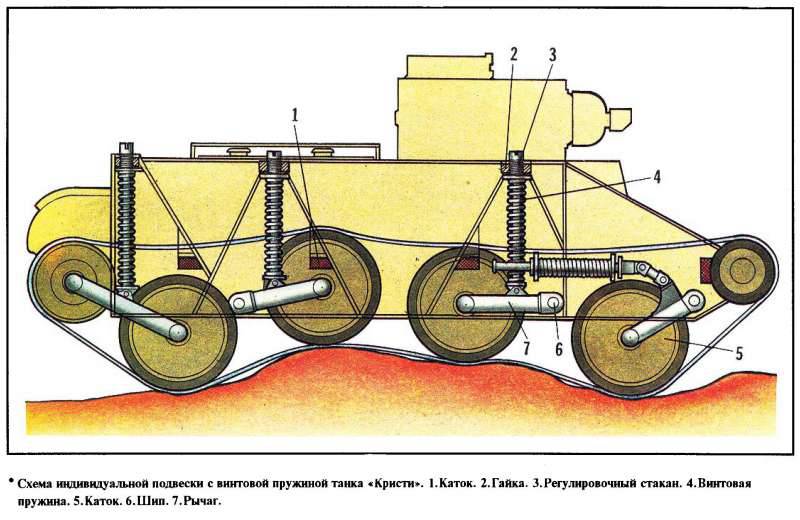
The scheme of suspension tanks BT. You can clearly see the location of the springs, making it impossible to install two towers. Figure from the book of I.P. Shmeleva "BT tanks"
Described T.R. The option of installing two towers of the T-26 tank on the BT chassis looks very absurd and pointless. He demands that one more person be added to the crew (in comparison with the BT-2 with a crew of two) who will control one of the towers. At the same time, weapons from a cannon and a machine gun are spread over two separate towers without any noticeable advantages over the basic layout. Despite this, the installation of two borrowed towers noticeably weights the tank.
Moreover, the installation of a new roof of the hull, two towers and an updated combat compartment in the case of the BT tank may not be possible for technical reasons. The article of the magazine "Polygon" referred to the refinement of the suspension, but they would be too complicated and would require a significant alteration of the body. Tanks of the BT family differed in a relatively narrow hull, the sides of which had elements of the so-called. candle pendant in the form of vertically placed springs and means of their adjustment. The springs of the second pair of road wheels were located in the area of the tower and the fighting compartment. Thus, the use of two towers would require to transfer these springs, changing the design of the suspension and housing. Without such changes, the full use of the towers was not possible due to the crowded and inconvenience of the fighting compartment.
It is possible that in the early stages of the formation of the appearance of promising armored vehicles, domestic engineers considered the possibility of designing a two-tower modification of the BT. However, if such ideas existed, they did not manage to go beyond the preliminary discussions. Any reliable information about the creation, not to mention the construction, testing or military operation, dvuhbashennyh BT is absent. This suggests that such a project never existed.
Everything suggests that the double-tower modification of the “High-Speed Tank” was not even developed, but in various domestic and foreign publications there are references to such technology. Probably the basis of this problem is some kind of misunderstanding or even a conscious hoax. In the case of the article of the magazine "Polygon" everything is clear - the editors noted April April with an interesting and unexpected joke. The reasons and prerequisites for the emergence of previous publications on this topic remain unknown.
In the history of the creation of weapons and military equipment left a huge number of unusual and interesting projects, many of which are known only to a narrow circle of specialists. Such developments always arouse great interest among the general public and attract attention. However, sometimes under the guise of an unusual and unknown project, the public may be offered not entirely truthful information based on rumors, speculation, or conscious hoaxes. One example of this was the double-mounted version of the BT tank, which appeared due to rumors or unverified information.
Based on:
http://aviarmor.net/
http://otvaga2004.ru/
http://armor.kiev.ua/
Shmelev I.P. BT tanks. - M .: Hobbikniga, 1993.
Epachev T.R. Two-headed salamander of the Red Army. Polygon, 2002, №2.
Article-mystification of the magazine "Polygon" (without the April Fool's epilogue):
http://otvaga2004.ru/tanki/istoriya-sozdaniya/dvuglavaya-salamandra/
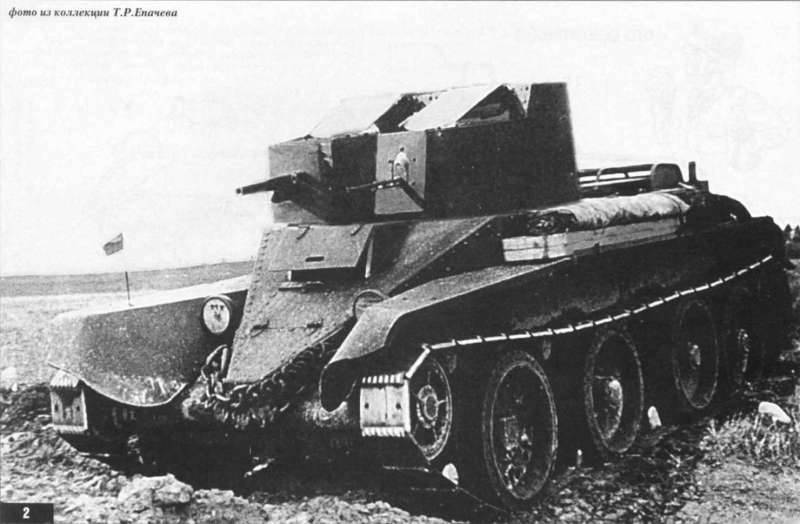
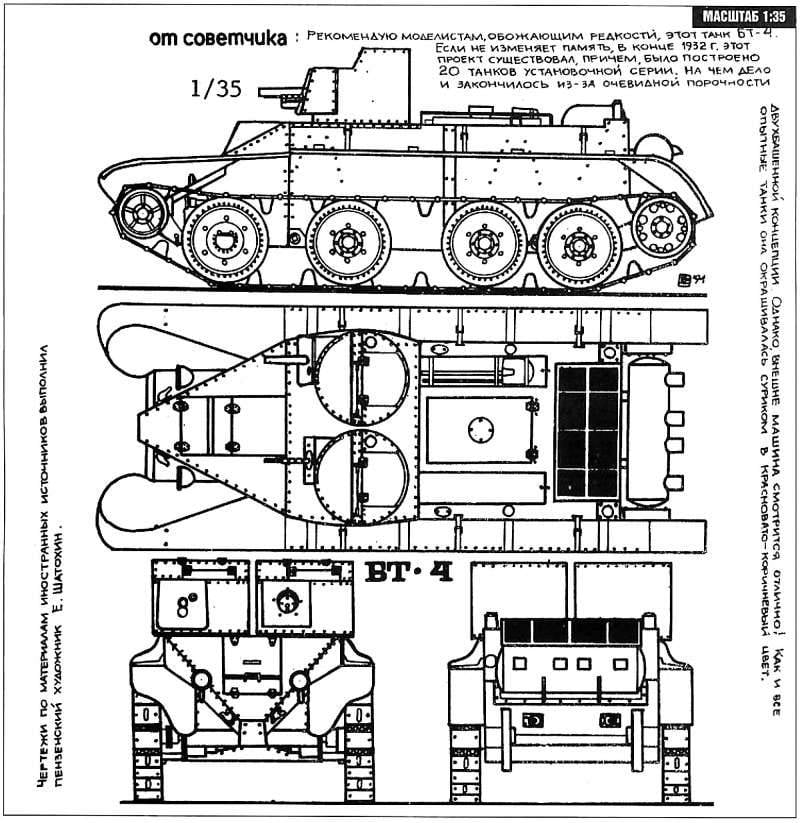
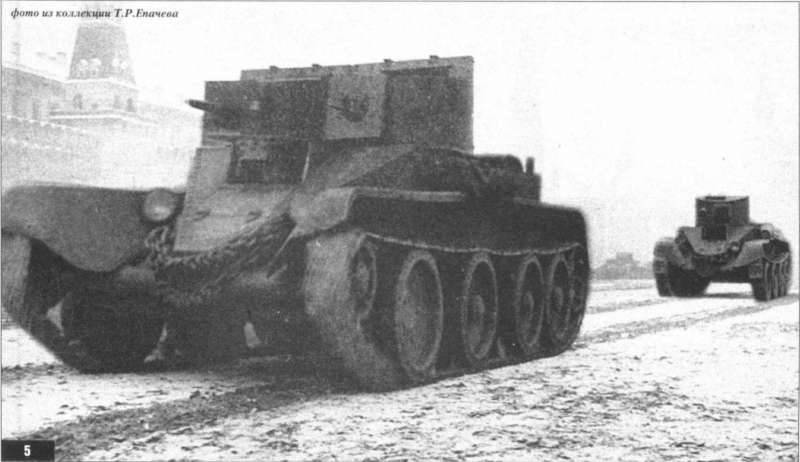
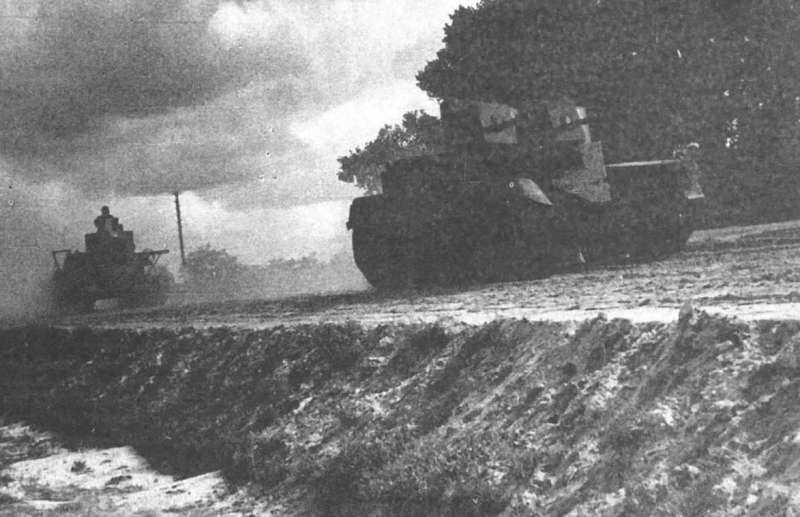
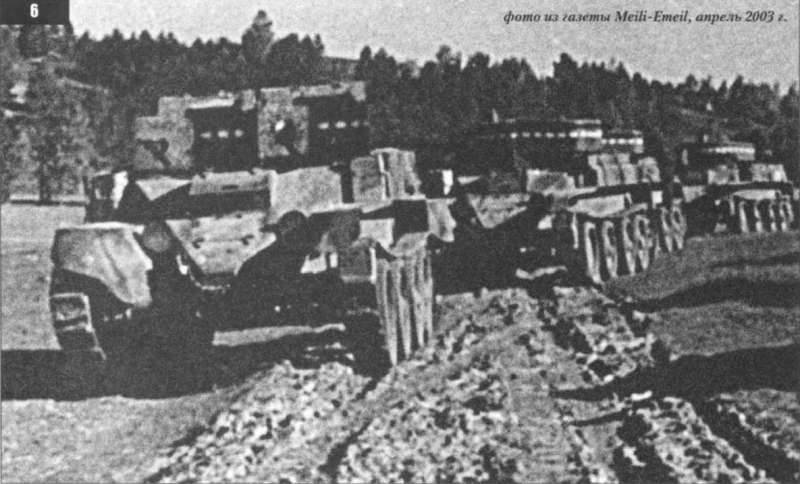
Information